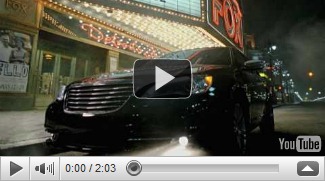The reasons advertising doesn’t work to promote or rehabilitate the image of a community are legion including, to name just two, a lack of credibility (it is a community talking about itself) and it is long proven to merely harden or affirm both those who are already positive or negative.
But if advertising ever had a chance to work for this purpose, it was last month when Chrysler ran a spectacular television ad for its hometown Detroit on the biggest stage possible for advertising, during the Super Bowl.
The ad was also perfectly executed with authentic, genuine and compelling imagery, memorable background music and voice-over and emotive story-telling.
While unrealistic at this level for even the most adequately funded community/destination marketing effort, if advertising was ever going to work to change or rehabilitate community image, this could be it.
But it didn’t work.
Is this heresy from a past CLIO award winner for the television portion of the “Wild About Anchorage!” campaign, still in evidence there after nearly 30 years?
No, and I’ll explain why from the point of view of someone also fortunate enough to find a formula that helped turn around another community’s image.
But the Chrysler/Detroit ad probably didn’t hurt either. What place wouldn’t treasure one of its big employers telling its story?
Before I explain my take in the bullets below, here are two excellent blogs from advertising and communication experts, one by Joan Sinopoli, Senior VP of Harris Interactive’s Brand and Communications and another by Laura Reis, President of Reis & Reis and author of Reis’ Pieces.
- Advertising doesn’t change minds. Only a slow-build earned media effort based on solid, objective information and interlaced with relentless brand management including vigilant brand defense has the potential to sway opinions and change minds and it takes a long time.
- Image ads worked as public service announcements in Anchorage, because the community didn’t have an image problem. It didn’t have an image at all so it just needed a little “wind” to release pent up resident pride for which advertising can be perfect where, as in Anchorage at the time, there is little risk that it will spill over to harden negatives elsewhere.
- The Chrysler/Detroit ad may have been better suited, had it just been run in Detroit where community pride was recently benchmarked at 24% compared to 38% on average for the 26 communities studied in the three year Gallup/Knight Foundation poll - slightly higher than results from similar studies of resident pride in Raleigh and Charlotte.
- While the Chrysler/Detroit ad resonated primarily among Michiganders, even deployed there, studies show it would probably have just hardened existing negative and positive perceptions. Even an ad as excellent as this one is just too blunt an instrument to sway opinions. But at home is where Detroit must first improve perceptions.
- The 24% pride level in Detroit may be pushed a bit higher by the fact that it has loss of a fourth of its population over the past decade, if as surveys show, negatives are less attached to place. To put Detroit and the communities benchmarked above in perspective, 91% of Durham residents are proud or very proud of their community, a 17 to 1 positive-to-negative ratio, compared to 1 to 1 ratios or less for the other communities.
- Durham’s image problem was both more complex and much less pervasive than Detroit’s. While Detroit’s has apparently metastasized nationwide, Durham’s image problem was always centered in two nearby counties. Durham’s national image was strong and primarily needed damage control and brand management to limit any contamination from or barriers presented by negative opinions in neighboring communities.
- Advertising is a bit like “friendly-fire” when it comes to community image. Due to low credibility, it backfires with residents where pride, image and attachment are already high and with external populations, much to the consternation of those always drawn to big, showy ad campaigns, testing show that ads merely harden existing negatives and positives, even where there is a means to deploy it that precisely.
- With resident pride at 91%, Durham residents just needed affirmation and empowerment-communication tools such as the precision of earned media and a “perceived injustice” element to brand management and defense.
- Paid advertising has a role which is similar to the a “wind” that harvests inquiries from interest generated by the more rehabilitating and promotional “sun” of other tactics such as earned media and brand management.
I’ve deliberately over-simplified community image to issues of pride and negative or positive perceptions or image. There are several other indicators such as aesthetic perceptions of appearance and sense of place, acceptance of other cultures, ethnicities and lifestyles and community engagement.
Everything begins though with sound marketing intelligence including scientific, generalizable research that pinpoints a community’s image both among internal and external audiences. Every community has an image or perception issue, often below the false security of anecdotal expressions or proclamations by officials.
Only marketing intelligence can unwrap it. Only marketing intelligence can benchmark any progress. Only marketing intelligence can suggest what communications tactics or mix of tactics to use.

No comments:
Post a Comment